Leatile Marata
Trends and Challenges in Next-Generation GNSS Interference Management
Oct 31, 2025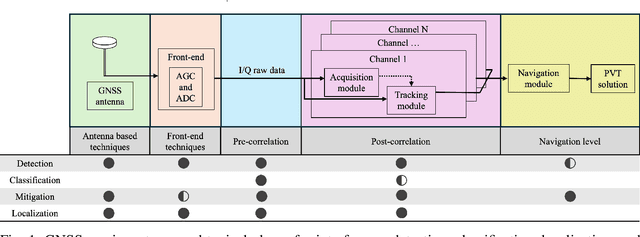
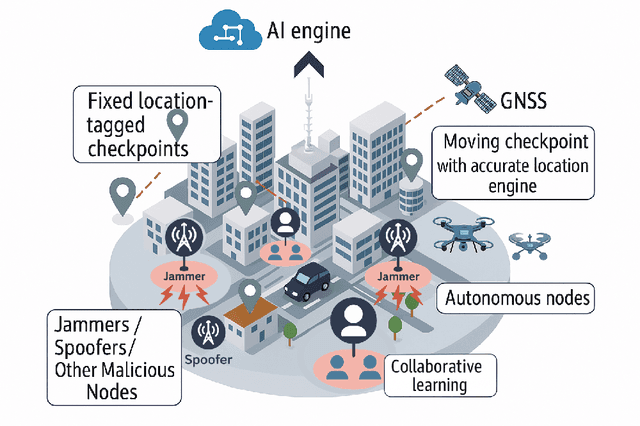

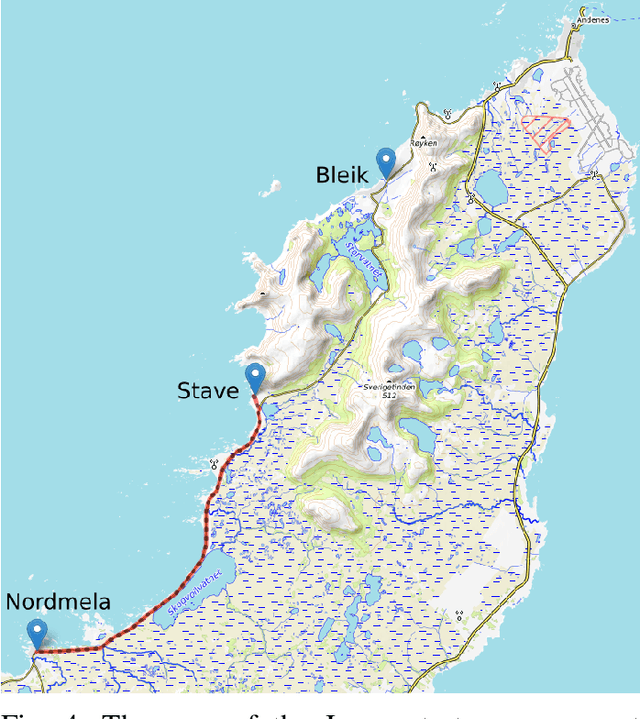
Abstract:The global navigation satellite system (GNSS) continues to evolve in order to meet the demands of emerging applications such as autonomous driving and smart environmental monitoring. However, these advancements are accompanied by a rise in interference threats, which can significantly compromise the reliability and safety of GNSS. Such interference problems are typically addressed through signal-processing techniques that rely on physics-based mathematical models. Unfortunately, solutions of this nature can often fail to fully capture the complex forms of interference. To address this, artificial intelligence (AI)-inspired solutions are expected to play a key role in future interference management solutions, thanks to their ability to exploit data in addition to physics-based models. This magazine paper discusses the main challenges and tasks required to secure GNSS and present a research vision on how AI can be leveraged towards achieving more robust GNSS-based positioning.
Activity Detection for Massive Random Access using Covariance-based Matching Pursuit
May 04, 2024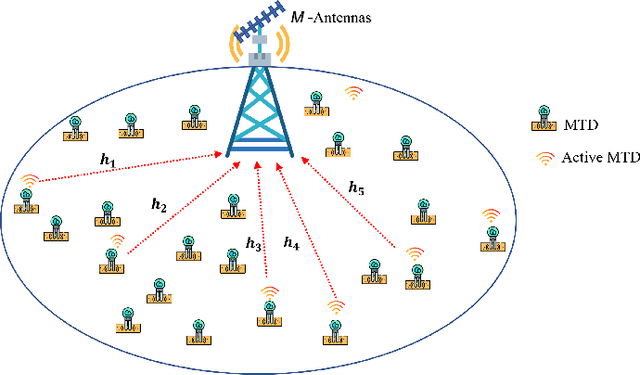
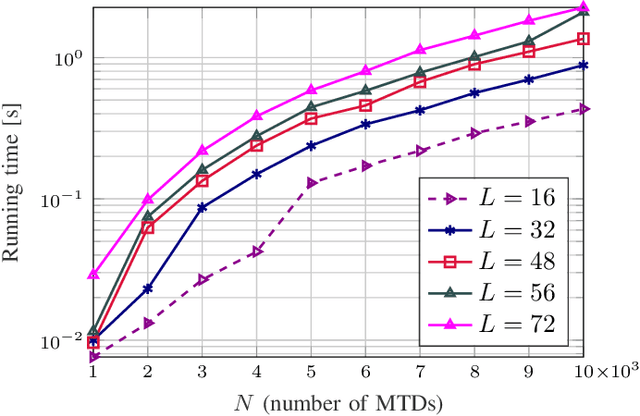
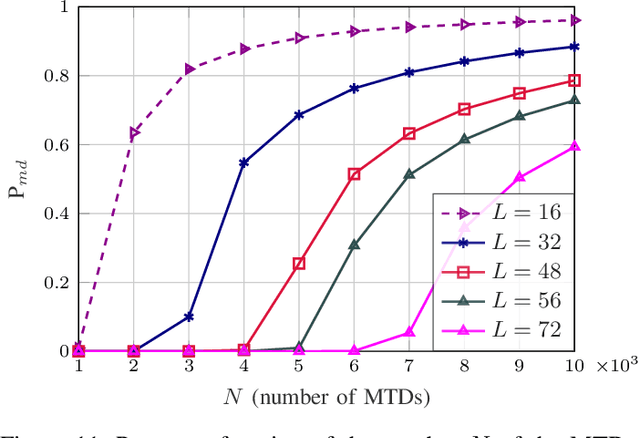
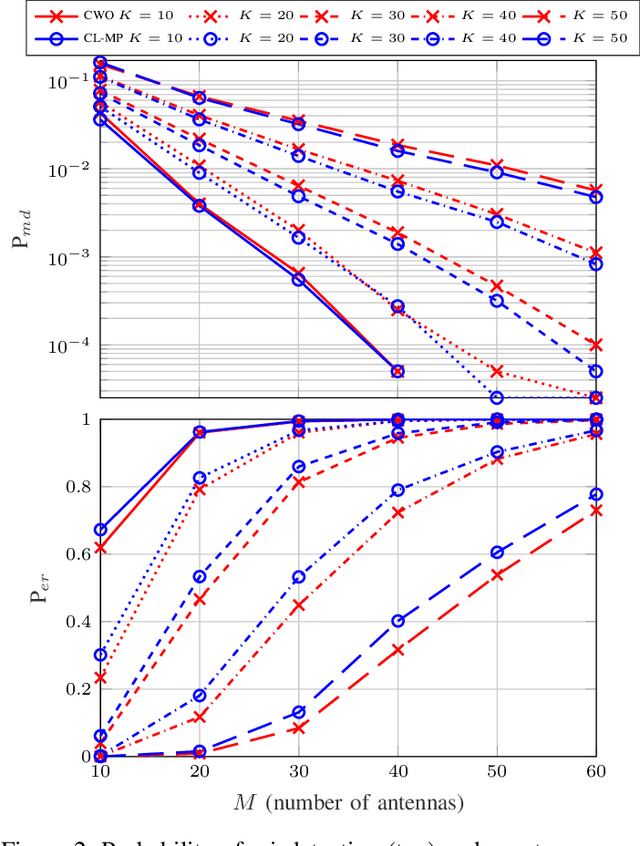
Abstract:The Internet of Things paradigm heavily relies on a network of a massive number of machine-type devices (MTDs) that monitor changes in various phenomena. Consequently, MTDs are randomly activated at different times whenever a change occurs. This essentially results in relatively few MTDs being active simultaneously compared to the entire network, resembling targeted sampling in compressed sensing. Therefore, signal recovery in machine-type communications is addressed through joint user activity detection and channel estimation algorithms built using compressed sensing theory. However, most of these algorithms follow a two-stage procedure in which a channel is first estimated and later mapped to find active users. This approach is inefficient because the estimated channel information is subsequently discarded. To overcome this limitation, we introduce a novel covariance-learning matching pursuit algorithm that bypasses explicit channel estimation. Instead, it focuses on estimating the indices of the active users greedily. Simulation results presented in terms of probability of miss detection, exact recovery rate, and computational complexity validate the proposed technique's superior performance and efficiency.
Joint Activity Detection and Channel Estimation for Clustered Massive Machine Type Communications
May 04, 2023Abstract:Compressed sensing multi-user detection (CS-MUD) algorithms play a key role in optimizing grant-free (GF) non-orthogonal multiple access (NOMA) for massive machine-type communications (mMTC). However, current CS-MUD algorithms cannot be efficiently parallelized, which results in computationally expensive implementations of joint activity detection and channel estimation (JADCE) as the number of deployed machine-type devices (MTDs) increases. To address this, the present work proposes novel JADCE algorithms that can be applied in parallel for different clusters of MTDs by exploiting the structure of the pilot sequences. These are the approximation error method (AEM)-alternating direction method of multipliers (ADMM) and AEM-sparse Bayesian learning (SBL). Results presented in terms of the normalized mean square error and the probability of miss detection evince comparable performance to the conventional algorithms. However, both AEM-ADMM and AEM-SBL algorithms have significantly reduced computational complexity and run-times, thus, increasing network scalability.
Joint Coherent and Non-Coherent Detection and Decoding Techniques for Heterogeneous Networks
Sep 27, 2022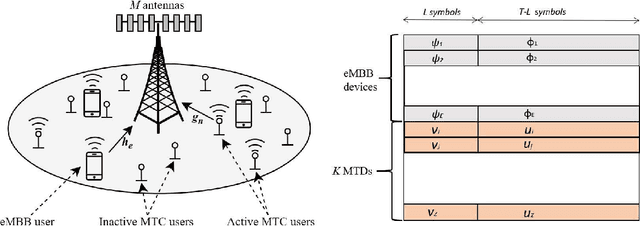
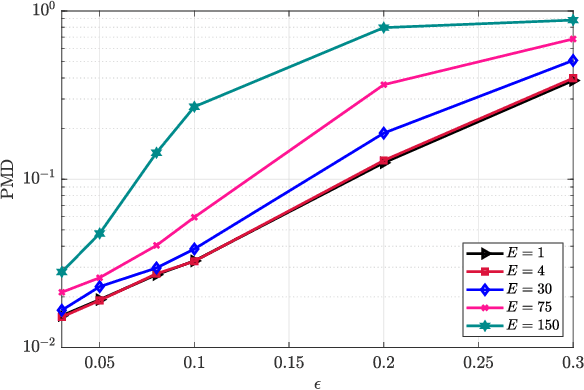
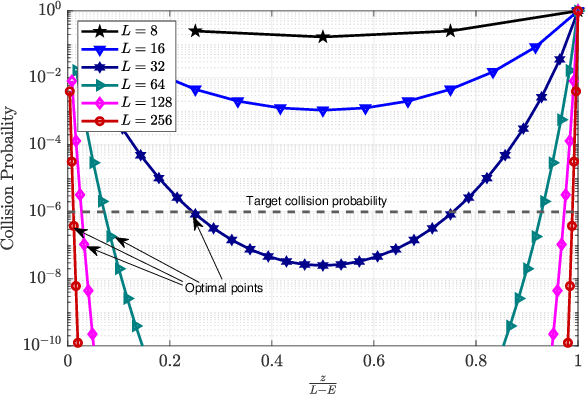
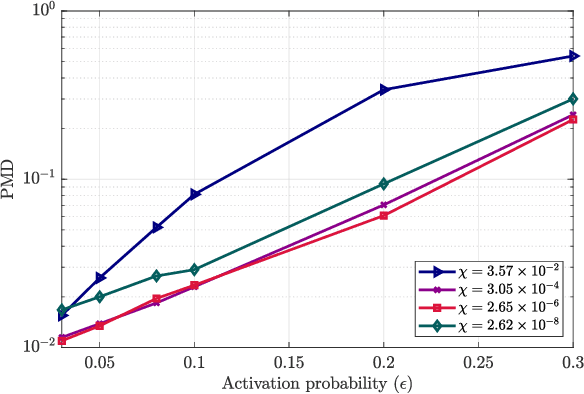
Abstract:Cellular networks that are traditionally designed for human-type communication (HTC) have the potential to provide cost effective connectivity to machine-type communication (MTC). However, MTC is characterized by unprecedented traffic in cellular networks, thus posing a challenge to its successful incorporation. In this work, we propose a unified framework for amicable coexistence of MTC and HTC. We consider a heterogeneous network where machine-type devices coexist with enhanced mobile broadband (eMBB) devices and propose transceiver techniques that promote efficient signal recovery from these devices. For this, we present an eMBB pilot and MTC data generation strategy that facilitates joint coherent decoding of eMBB data and non-coherent decoding of MTC data. Furthermore, we assess the feasibility of coexistence using receiver operating characteristics, outage probability, and normalized mean square error (NMSE). Our numerical results reveal that a harmonious coexistence of the heterogeneous services can be achieved with properly configured average signal-to-noise ratios and pilot length.
User Activity Detection and Channel Estimation of Spatially Correlated Channels via AMP in Massive MTC
Dec 08, 2021
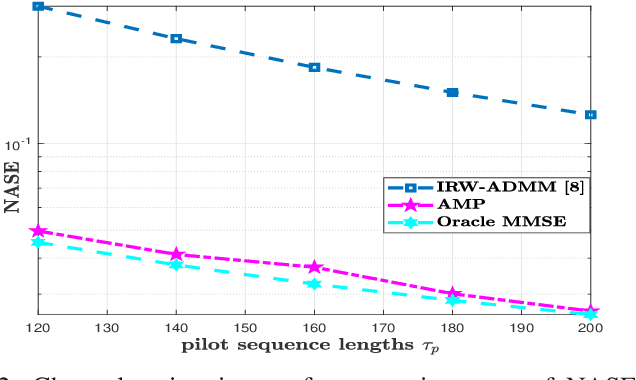
Abstract:This paper addresses the problem of joint user identification and channel estimation (JUICE) for grant-free access in massive machine-type communications (mMTC). We consider the JUICE under a spatially correlated fading channel model as that reflects the main characteristics of the practical multiple-input multiple-output channels. We formulate the JUICE as a sparse recovery problem in a multiple measurement vector setup and present a solution based on the approximate message passing (AMP) algorithm that takes into account the channel spatial correlation. Using the state evolution, we provide a detailed theoretical analysis on the activity detection performance of AMP-based JUICE by deriving closed-from expressions for the probabilities of miss detection and false alarm. The simulation experiments show that the performance predicted by the theoretical analysis matches the one obtained by the numerical results.
Joint Channel Estimation and Device Activity Detection in Heterogeneous Networks
May 27, 2021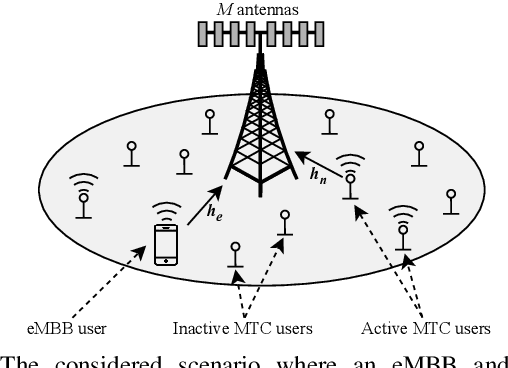
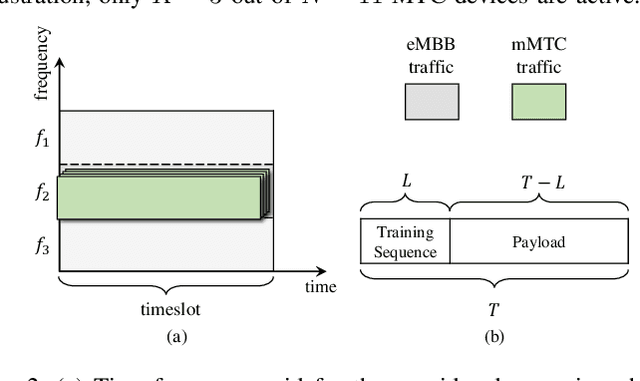
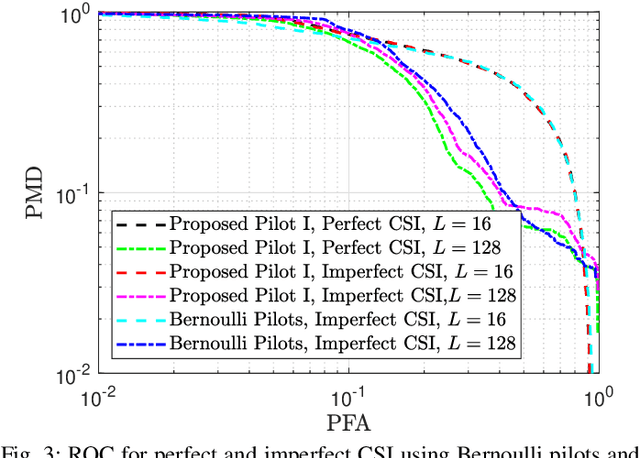
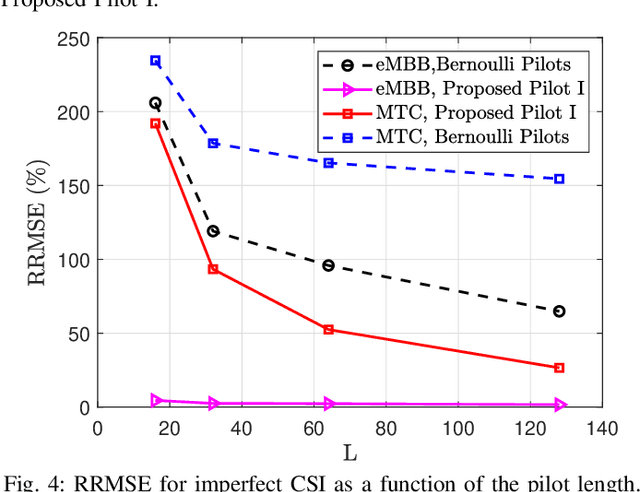
Abstract:Internet of Things (IoT) has triggered a rapid increase in the number of connected devices and new use cases of wireless communications. To meet the new demands, the fifth generation (5G) of wireless communication systems features native machine type communication (MTC) services in addition to traditional human type communication (HTC) services. Some of the main challenges are the heterogeneous requirements and the sporadic traffic of massive MTC (mMTC), which makes the orthogonal allocation of resources infeasible. To overcome this problem, grant free non-orthogonal multiple access schemes have been proposed alongside with sparse signal recovery algorithms. While most of the related works have considered only homogeneous networks, we focus on a scenario where an enhanced mobile broadband (eMBB) device and multiple MTC devices share the same radio resources. We exploit the approximate message passing (AMP) algorithm for joint device activity detection and channel estimation of MTC devices in the presence of interference from eMBB, and evaluate the system performance in terms of receiver operating characteristics (ROC) and channel estimation errors. Moreover, we also propose two new pilot sequence generation strategies which improve the detection capabilities of the MTC receiver without affecting the eMBB service.
 Add to Chrome
Add to Chrome Add to Firefox
Add to Firefox Add to Edge
Add to Edge